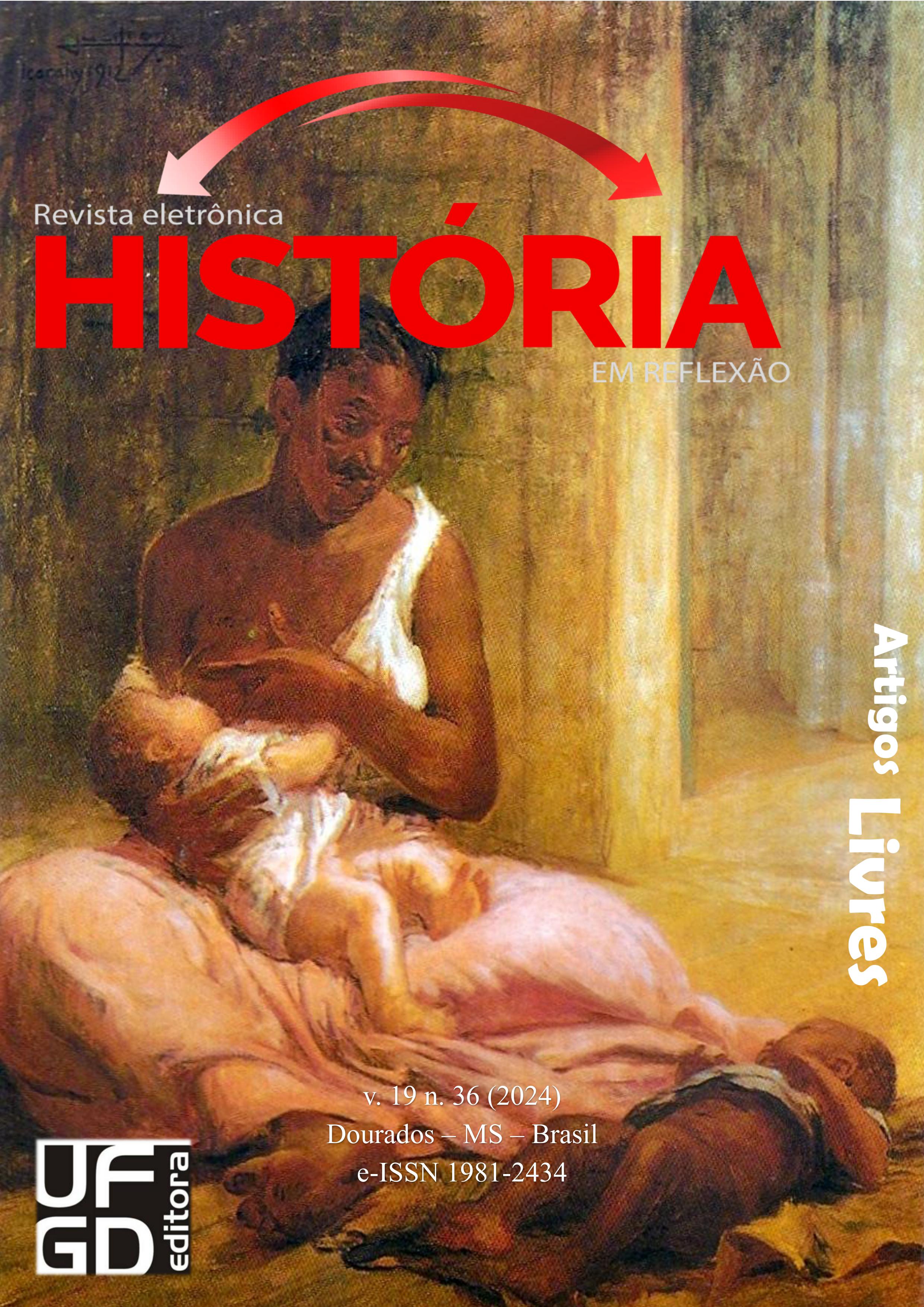Axé, Babá! The carnival returned to home!
DOI:
https://doi.org/10.30612/rehr.v19i36.17509Keywords:
Religião. Umbanda. Escolas de samba. Carnaval. Desfile.Abstract
This article aims to show that the samba schools of the Carnival of the city of Río de Janeiro returned to Afro-Brazilian religions as the theme of their parades in the years 2020, 2022 and 2023, after a period deprived of this theme, despite that the parades and samba schools had their origins in the terreiros of Rio, spaces that were configured as African territories in post-slavery Brazil and
where all the cultural capital of black people was born, including religions, music, aesthetics . The article details the parades from 2017 to 2023 based on the analysis of the themes of the sambas-plots, quantifying those in which
Umbanda, Candomblé, their deities and their symbols are present, in a direct way - that's it, that's it. main theme the substantial - part of the same - the indirect - where the theme is briefly mentioned. The article highlights the result of the 2022 parade, where the Academicos do Grande Rio school won the championship with the samba “Fala, Majeté! Seven keys of Exu”, because it portrays Exu, the most controversial deity of the African pantheon due to the
entire process of demonization suffered in other religions, especially in neopentecostal churches. The article recovers this process of demonization to show how significant this result is.
Downloads
References
Referências Bibliográfias
BIRMAN, Patrícia. Feitiçarias, territórios e resistências marginais. Mana, Rio de Janeiro, Volume 15, Número 2, Outubro de 2009. DOI: https://doi.org/10.1590/S0104-93132009000200001
GIRON, Luis Antônio. O etnógrafo enfarinhado: Gonçalves Dias na guerra contra o entrudo. Métis: história & cultura. América do Norte, 1, ago, 2011. P. 191-192.
GIUMBELLI, Emerson. Minorias religiosas. In: As religiões no Brasil: continuidades e rupturas. Petrópolis, Vozes, 2006. JUNIOR, Luiz Rufino Rodrigues. Pedagogias das Encruzilhadas. Revista Periferia, v.10, n.1, p. 71-88, Jan./Jun. 2018. DOI: https://doi.org/10.12957/periferia.2018.31504
LUZ, Marco Aurélio; LAPASSADE, George. O segredo da macumba. Rio de Janeiro, Paz e Terra, 1972.
PIERUCCI, Antônio Flávio. “Bye bye, Brasil” – O declínio das religiões tradicionais no Censo 2000. Estudos Avançados. V. 18, nº 52, 2004, p. 17-29 DOI: https://doi.org/10.1590/S0103-40142004000300003
PORTAL O GLOBO. Disponível em: https://oglobo.globo.com/rio/noticia/2023/02/capital-do-carnaval-rio-e-o-destino-mais-buscado-por-turistas-para-a-folia.ghtml. Acesso em 10/09/2024
PRANDI, Reginaldo. O que você precisa ler para saber quase tudo sobre as religiões afro-brasileiras. Revista Brasileira de Informação Bibliográfica em Ciências Sociais. BIB-ANPOCS, São Paulo, nº 63, 1º semestre de 2007, págs. 7-30.
PRANDI, Reginaldo. Exu, de mensageiro a diabo. Sincretismo católico e demonização do orixá Exu. Revista USP. São Paulo, 46-63, 2001. DOI: https://doi.org/10.11606/issn.2316-9036.v0i50p46-63
REVISTA EXAME,. Rio Estuda financiamento privado para escolas de samba. Disponível em: https://exame.com/brasil/rio-estuda-financiamento-privado-para-escolas-de-samba/. Acesso em 10/09/2024
SITE MUSEU AFRO BRASIL. Ismael SIlva. Disponível em: http://www.museuafrobrasil.org.br/pesquisa/hist%C3%B3ria-e-mem%C3%B3ria/historia-e-memoria/2014/12/30/ismael-silva. Acesso em 10/09/2024
SITE PODER 360. Carnaval deve movimentar economia do Rio em 45 bilhões. Disponível em: https://www.poder360.com.br/brasil/carnaval-deve-movimentar-economia-do-rio-em-r-45-bilhoes/. Acesso em 10/09/2024
SITE RIO CARNAVAL. História. Disponível em: https://www.riocarnaval.org/pt/carnaval-do-rio/historia. Acesso em 10/09/2024
SOUZA, André Ricardo de; ABUMANSSUR, Edin Sued; LEITE JUNIOR, Jorge. Percursos do Diabo e seus papéis nas igrejas neopentecostais. Horizontes Antropológicos. Porto Alegre, v. 25, n. 53. Abril, 2019, p. 385-410. DOI: https://doi.org/10.1590/s0104-71832019000100014
Downloads
Published
How to Cite
Issue
Section
License
Copyright (c) 2024 Revista Eletrônica História em Reflexão

This work is licensed under a Creative Commons Attribution-NonCommercial-ShareAlike 4.0 International License.
Os autores devem aceitar as normas de publicação ao submeterem a revista, bem como, concordam com os seguintes termos:
(a) O Conselho Editorial se reserva ao direito de efetuar, nos originais, alterações da Língua portuguesa para se manter o padrão culto da língua, respeitando, porém, o estilo dos autores.
(b) Autores mantém os direitos autorais e concedem à revista o direito de primeira publicação, com o trabalho simultaneamente licenciado sob a Atribuição-NãoComercial-CompartilhaIgual 3.0 Brasil (CC BY-NC-SA 3.0 BR) que permite: Compartilhar — copiar e redistribuir o material em qualquer suporte ou formato e Adaptar — remixar, transformar, e criar a partir do material.
A CC BY-NC-SA 3.0 BR considera os termos seguintes:
- Atribuição: Você deve dar o crédito apropriado, prover um link para a licença e indicar se mudanças foram feitas. Você deve fazê-lo em qualquer circunstância razoável, mas de nenhuma maneira que sugira que o licenciante apoia você ou o seu uso.
- NãoComercial: Você não pode usar o material para fins comerciais.
- CompartilhaIgual: Se você remixar, transformar, ou criar a partir do material, tem de distribuir as suas contribuições sob a mesma licença que o original.
- Sem restrições adicionais: Você não pode aplicar termos jurídicos ou medidas de caráter tecnológico que restrinjam legalmente outros de fazerem algo que a licença permita.



